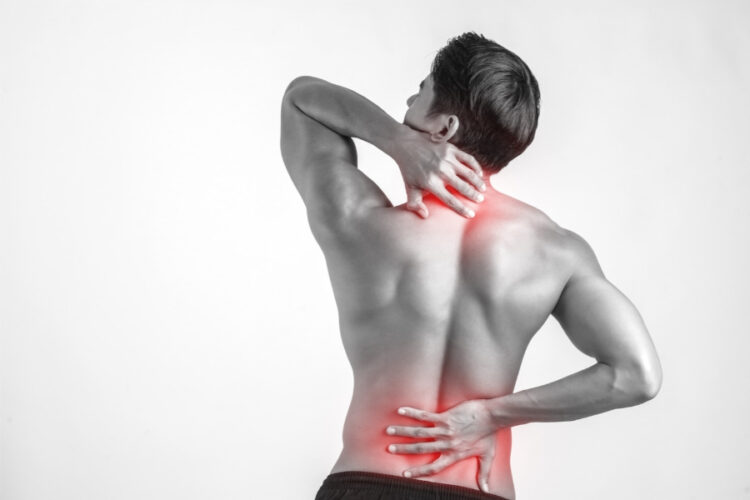Understanding Back And Neck Pain
Back and neck pain are common, especially with prolonged sitting and poor posture. It can range from mild to severe, typically caused by mechanical issues in the muscles, ligaments, or joints. The spine is divided into three regions: cervical (neck), thoracic (mid-back), and lumbar (lower back), each with its vulnerabilities.
In addition to physical causes, psychological factors like stress and anxiety can contribute to pain by increasing muscle tension. Effectively managing both physical and emotional factors is key to achieving lasting relief.
Common Causes Of Back And Neck Pain
Back and neck pain have many causes, with poor posture being a leading factor, especially in today’s screen-focused world. Prolonged slouching can strain muscles and create imbalances, but ergonomic improvements can help prevent chronic discomfort.
Injuries are another common source, whether from sudden trauma like whiplash or repetitive strain from overuse. Sports, falls, and accidents can cause issues like herniated discs or fractures that require prompt care for effective recovery.
Degenerative conditions such as arthritis or disc degeneration, often linked to aging, also contribute to persistent pain. These cases benefit from early diagnosis and a multi-faceted treatment plan involving medication, physical therapy, and lifestyle changes.
Signs You Need Immediate Care
Recognizing when back and neck pain requires immediate care is essential to avoid complications. Severe pain that doesn’t improve with rest or over-the-counter medications may signal serious issues like a herniated disc or spinal fracture, requiring prompt medical evaluation.
Red flags also include numbness, tingling, or weakness in the arms or legs, indicating nerve involvement, and loss of bladder or bowel control, or significant weight loss, which could suggest conditions like spinal cord compression or malignancy.
If pain disrupts sleep or daily activities, seeking professional care is necessary. Early intervention can prevent chronic pain and aid in a faster recovery.
First Steps To Take For Immediate Relief
When back or neck pain first occurs, taking immediate action can prevent it from worsening. Rest is important, but should be balanced with gentle movement, like light stretching or walking, to reduce stiffness and inflammation.
Ice helps reduce inflammation and numbs pain in the first 48 hours, while heat soothes muscle tension and improves circulation. Alternating ice and heat can maximize benefits, but always protect your skin with a cloth.
Over-the-counter NSAIDs can help manage pain and inflammation when used as directed. If pain persists or red-flag symptoms appear, seek professional medical advice.
Effective Home Remedies For Pain Management
Home remedies are an affordable way to manage mild back and neck pain. Maintaining good posture throughout the day, whether sitting, standing, or moving, helps prevent strain. Ergonomic chairs and regular posture checks can further reduce discomfort.
Incorporating regular exercise and stretching, such as walking, swimming, or yoga, strengthens muscles and improves flexibility. Stretching the neck, shoulders, and lower back can relieve tension and enhance mobility.
A diet rich in omega-3s, proper hydration, and supplements like vitamin D and calcium promotes healing, reduces inflammation, and supports bone health.
When To Seek Professional Help
If back or neck pain persists for over a few weeks, it’s important to consult a back and neck doctor for a thorough evaluation. Chronic pain often requires a detailed assessment and a personalized treatment plan.
Severe pain that disrupts daily activities or sleep also necessitates professional attention. A proper diagnosis from a specialist can guide treatments such as physical therapy or medications, helping to prevent further complications.
Additionally, if you experience numbness, tingling, or weakness, seek immediate care, as these symptoms may indicate nerve involvement. Consulting a back and neck doctor ensures you receive the appropriate care for your condition.
Treatment Options: What To Expect
When seeking help for back and neck pain, treatment begins with a physical exam and may include imaging like X-rays or MRIs.
Options include physical therapy, medications, or interventional procedures. Physical therapy focuses on strengthening, flexibility, and posture through customized exercises.
Medications like muscle relaxants or corticosteroids manage pain and inflammation, while more severe cases may require epidural injections or nerve blocks for additional relief.
Preventative Measures For Future Pain
Prevention is key to avoiding back and neck pain. A healthy lifestyle with regular exercise, a balanced diet, and hydration supports well-being and reduces injury risk. Strengthening core muscles helps support your spine.
Ergonomics, such as good posture, supportive seating, and regular stretching, prevent strain. Proper lifting and bending techniques are also important.
Managing stress reduces muscle tension and pain. Practices like meditation, deep breathing, yoga, and sleep support spinal health.
The Role Of Physical Therapy In Recovery
Physical therapy is essential for recovering from back and neck pain. A personalized exercise plan is created to improve flexibility, strength, and posture, relieving pain and preventing future issues. Under the guidance of a spine care expert, treatment may also include techniques such as massage or joint mobilization to ease muscle tension and improve mobility. These methods offer both immediate relief and long-term benefits. Therapists also teach proper posture and body mechanics to support recovery.
Beyond pain relief, physical therapy improves overall function, helping you return to daily activities with more ease and confidence while addressing root causes to prevent recurrence.
Conclusion: Your Journey To A Pain-Free Life
Achieving a pain-free life involves not only addressing immediate symptoms but also adopting a holistic approach to health. By understanding the causes of back and neck pain, you can take proactive steps to manage and prevent it. Timely care can greatly improve recovery and reduce the risk of chronic pain.
Lifestyle changes, like regular exercise, proper ergonomics, and stress management, can prevent future pain and improve your quality of life. Professional treatments, such as physical therapy, provide valuable support in managing pain and aiding recovery.
A balanced approach that addresses both physical and psychological factors is key to quick recovery. With the right knowledge, tools, and support, you can overcome pain and lead a healthier, more vibrant life. Your determination and perseverance make a pain-free existence possible.

